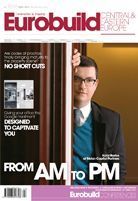What is the ideal workplace? In the last few years the model for this has been the offices of internet giant Google. Desks made out of surfboards, workrooms located in fairytale Cinderella coaches, playrooms, gyms, huge canteens and spas - all are provided for the thousands of programmers, who sometimes do not leave the office for a few days at a time. Such offices have set design trends all over the world, and the huge furnishing budgets for them have made it possible to realise designers' most outlandish visions. But is it actually only about the design? We put this question to Stefan Camenzind, a partner and the general director of Swiss studio Camenzind Evolution. His team designed the Google offices in Dublin, Moscow, Stockholm, Zurich and, recently, Tel Aviv. "Clients such as Google don't actually look for designers. They look for studios like ours, who understand what it's like to work for such companies. This depends on understanding the local culture and how to create a work e






























































